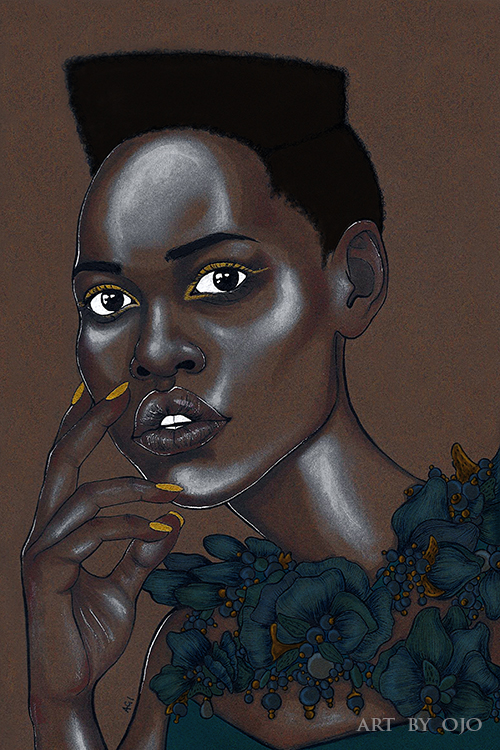Ojo Agi is a Toronto based Nigerian-Canadian artist. Her artwork seeks to explore races or identities that are often ignored in contemporary art. In 2012, Ojo worked with Alex Folzi on an exclusive t-shirt collection. In 2015, Ojo Agi's art was featured in a pop-up gallery in Ottawa, Ontario.HA: Tell me about yourself. Can you explain your transition from a Tumblr account to a personal website?OA : My name is Ojo Agi and I'm a visual artist currently based in Toronto. I've always loved making art and about six years ago I started posting my artwork online. I received a lot of positive feedback, which encouraged me to continue making art, but the downside of social media platforms is that you lose control of the context once you post online. People were reposting my work and it was rarely credited back to me. Two years ago I made my own site, which has helped to contain my work and act as an online portfolio.HA: What is the message that you try to convey through your pictures?OA : Growing up, I rarely--if ever--saw people like me represented positively in the media I consumed. So writing stories and drawing pictures has been my way of making up for it. At the core of it (message), is representation, but simply representing women like me in non-stereotypical ways has also been an act of resistance against white supremacist, patriarchal standards.HA : Where do you gather inspiration for your art work? Are there any artists who have influenced your work?OA: I take in inspiration from so many sources--photographs, fabrics, people on the street, other artists. Some of my favourites are Dessie Jackson, Stella Blu and Daniel Segrove but I have many, many more.HA: When "marketing" your work to people what techniques have worked and what has not ?OA: I'm still trying to figure that out! But I can say that exposure for exposure's sake is not beneficial. I have to learn to market myself to the right audiences and be selective with how I choose to show (and, therefore, brand) my work. This means saying no to some opportunities and working to create my own if I can't find what I'm looking for. For example, I hosted a pop-up gallery in May 2015 which had a great turnout and helped showcase my art locally. It also set the tone for how I want my work to be shared with the public and gave people an idea of the standard I'm looking for.HA: Have you faced any criticism or misconceptions concerning your work? How have you tried to alleviate such circumstances in which you felt that you were misunderstood?OA: Once someone commented on my Instagram photo that I only drew racially ambiguous people. It was absurd since I was in the middle of posting my "Daughters of Diaspora" collection which was based specifically on reference photos of African models (my Nigerian friend included).I thought a lot of it was chalked up to the commenter's ignorance about what looks "black" or "African" enough. The conversation went back and forth but ultimately I can say this: if there is something you feel is missing in art or media, then create it! One person can't (and shouldn't) represent everyone. So if there's a gap, look for ways you can fill it.
2 Champagne Drive - Unit C9
Toronto, Ontario, M3J 0K2
(647) 478-8752
The Voice of Downsview
Your Custom Text Here

